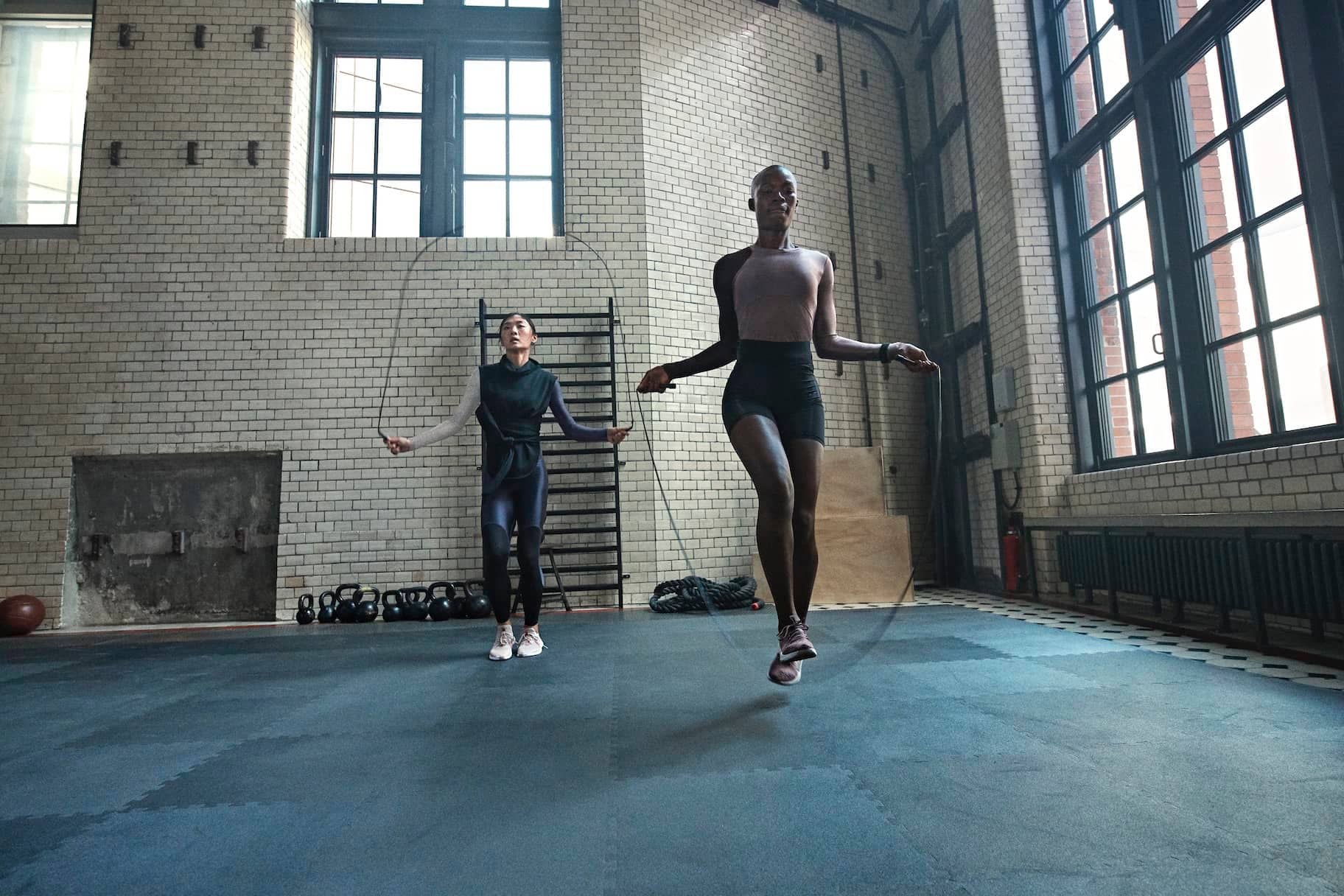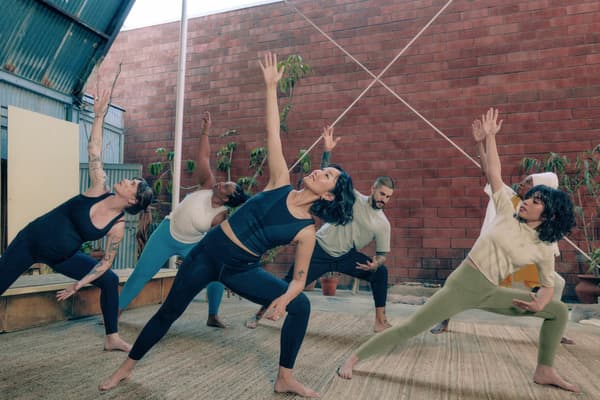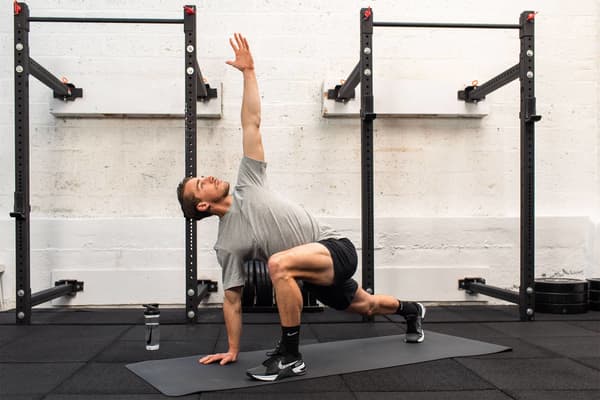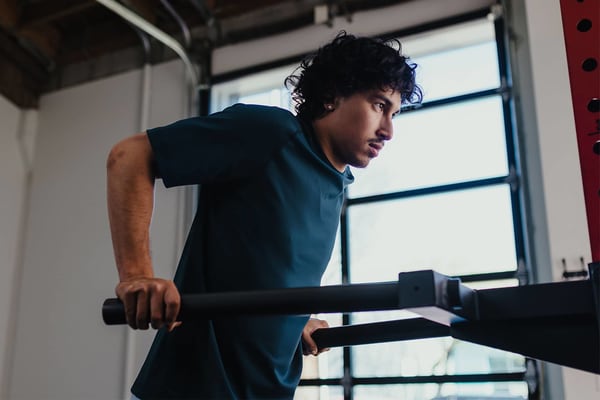Starting on March 11, 3D Secure 2.0 will be introduced for credit card payments. See details here.
8 Warm-Up Exercises to Prepare for Your Workout
Sports & Activity
You may want to jump straight into your workout, but warming up can boost your performance and prevent injury. Here's a list of warm-up exercises for beginners.

Are you a serial warm-up skipper? It’s time to change that! Even if you’re tempted to jump straight into the workout, warming up can improve your performance and prevent injury, leading to better training sessions.
Best Warm-Up Exercises for Beginners and Beyond
When it comes to establishing a warm-up routine, you may have come across the terms "dynamic" and "static" stretching.
What’s the difference? Dynamic stretching involves movements that slowly stretch the muscles and move joints through their full range of motion. It’s ideal for warm-ups. Static stretching involves stretching and holding a position, and it's best done after a workout.
Here’s a list of warm-up exercises to help you perform better:
1.Side Bend
- Stand with your feet shoulder-width apart.
- Raise your right hand overhead, and bend to the left side, keeping your lower body still and using your abdominal muscles to control the movement.
- Alternate between the right and left side until you've done 15 to 20 reps in each direction.
Muscles used: external and internal obliques
2.Leg Swing
- Stand with your feet shoulder-width apart and next to a chair or wall to stabilize yourself.
- With one hand touching the chair/wall, swing the alternate leg forward and backward.
- Try to keep your upper body facing forward, only hinging at the hip.
- Repeat on each side for 20 reps or more.
Muscles used: hip flexors, quadriceps and hamstrings
3.Arm Crossover
- Stand with your feet shoulder-width apart.
- Lift your arms out to the side, so they’re in line with your shoulders and parallel to the ground.
- Swing your arms across the center of your chest and let them criss-cross each other, aiming to slap yourself on the back.
- Swing them back out, opening your chest as your arms extend back behind you.
- Repeat, this time crossing with the opposite arm on top.
- Repeat for 20 to 30 seconds.
Muscles used: chest, back and shoulders
4.Lunge With Hamstring Stretch
- Begin standing with your feet together.
- Step forward and bend both knees to 90 degrees, keeping your knees behind your toes.
- Straighten your front leg, shifting your weight back slightly, to stretch out your front hamstring.
- Return to standing, then repeat on the opposite leg.
- Alternate for 10 to 12 reps on each leg.
Muscles used: glutes, hamstrings and quadriceps
5.Arm Circles
- Stand with your feet shoulder-width apart and your arms at your sides.
- Keeping your arms straight, move them around in big circles, from your hips to overhead and then back around.
- After you’ve done 15 to 20 reps, switch directions.
Muscles used: shoulders, arms, chest and back
6.Toe Walk
- Stand with feet shoulder-width apart.
- Raise both of your heels off the ground, balancing on the balls of your feet.
- Slowly walk forward, staying on the balls of your feet.
Muscles used: calves and ankles
7.Lunge and Twist
- Stand tall with your feet together.
- Step forward on your left leg and bend both knees to 90 degrees, keeping your knees behind your toes.
- Twist your upper body to the left.
- Return to standing and repeat on the other side (right leg, twisting to the right).
Muscles used: obliques, abdominals and hip flexors
8.Inchworm
- Stand with your feet shoulder-width apart.
- Fold forward at the hips and place your hands on the ground.
- Walk your hands out until you are in a high plank — hands under shoulders and body in a straight line from head to hips to heels.
- Walk your feet toward your hands, until they’re under your hips.
- Repeat.
Muscles used: lower back, calves, hamstrings, core and shoulders
Frequently Asked Questions
How Long Should You Warm Up For?
Set aside five to 10 minutes to warm up prior to your workout. Combining some dynamic stretches with some light cardio like doing jumping jacks or using an elliptical is considered the best way to warm up your muscles.
Why Are Warm-Up Exercises Important?
A warm-up is a dynamic movement routine that prepares your body for physical activity. The ideal warm-up will incrementally increase your body temperature, dilate your blood vessels and send more blood and oxygen flow to your muscles. This ensures your heart and muscles are ready to go for more intense activity.
What Are the Benefits of a Warm-Up?
Warm muscles are flexible, relaxed muscles, and that has a few key benefits. First, you have a lower risk of injury. Second, dilated blood vessels send more oxygenated blood to your working muscles. Oxygen is used to convert glucose into adenosine triphosphate (ATP), providing energy for muscle contractions.
Also, flexible muscles and joints have a better range of motion, which has been linked to enhanced strength, better muscle balance, proper muscle activation and joint stability. And finally, a warm-up may ease muscle stiffness that has built up throughout the day, particularly if you spend most of the day sedentary.
























